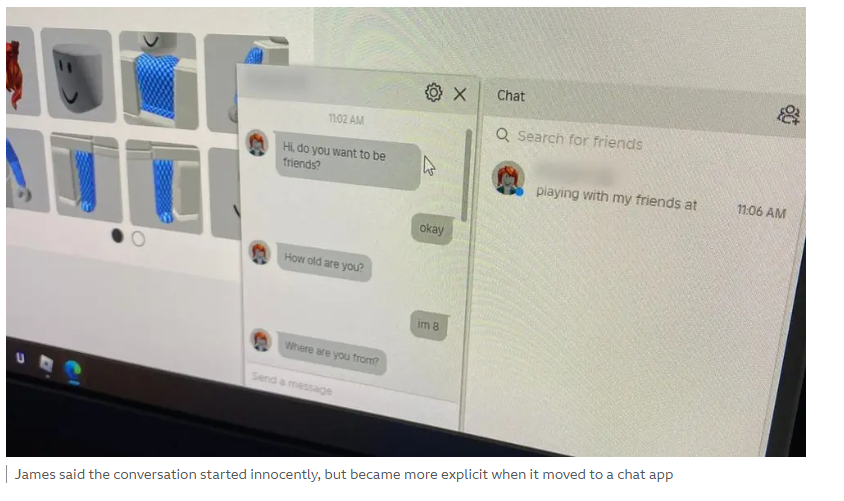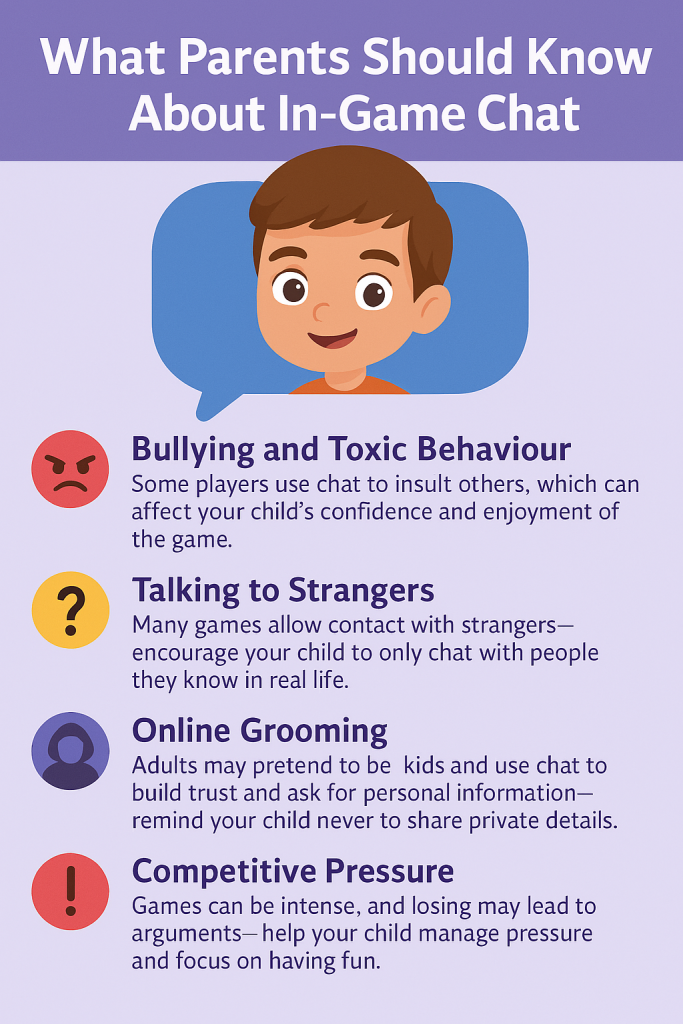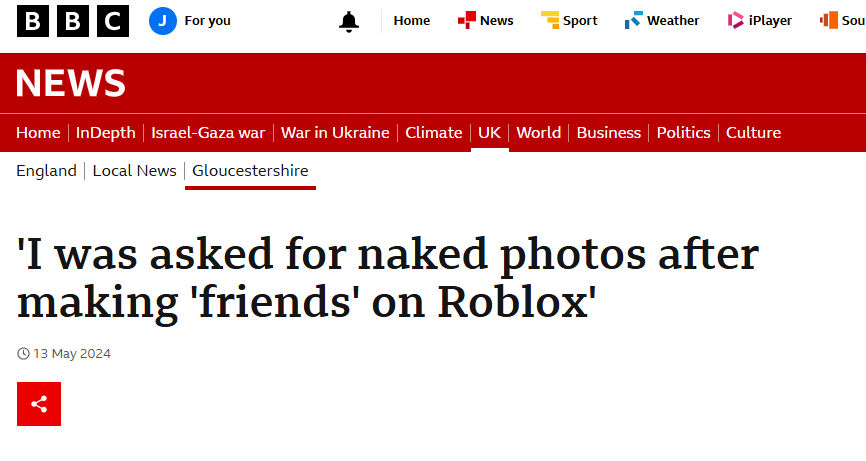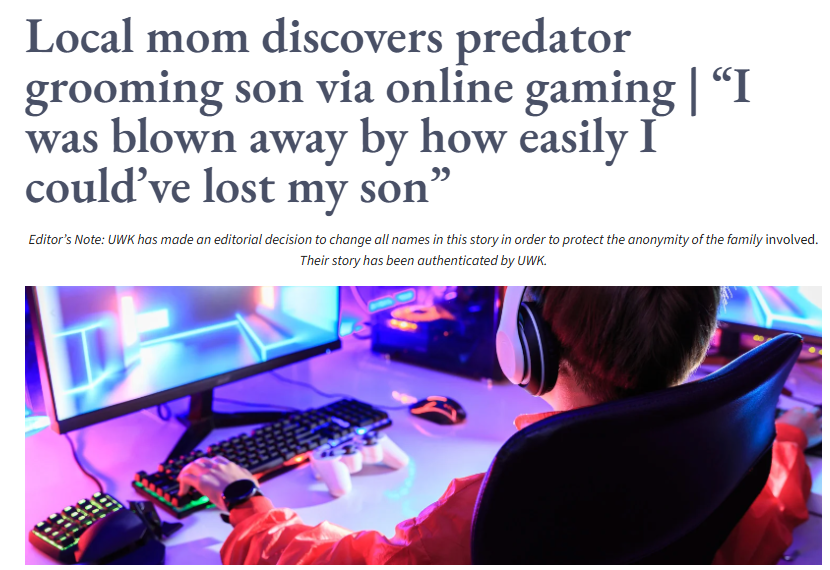Video games are hugely popular with children and teens — and many of them include chat features that let players communicate through voice or text while playing. These tools can make games more interactive, but they also bring risks that parents should be aware of.
What Is In-Game Chat?

photo credits to : https://www.bbc.co.uk/news/uk-england-gloucestershire-68616730
In-game chat allows players to communicate with others during gameplay. This can happen through:
- Text chat (typing messages during the game)
- Voice chat (talking using a microphone or headset)
It’s often used to coordinate strategies, socialise, or simply pass the time — but not all conversations are positive or safe.
Risks to Be Aware Of

Bullying and Toxic Behaviour
- Some players use in-game chat to insult or belittle others, especially if someone isn’t playing well.
- Toxic comments can affect a child’s confidence and enjoyment of the game.
- Encourage your child to speak up if another player is making them feel uncomfortable or upset.
Talking to Strangers
- Many games allow open communication with people your child doesn’t know.
- Friend requests or chat messages can come from complete strangers.
- Discuss why it’s safer to play and chat only with friends they know in real life.
Online Grooming
- In-game chat is sometimes used by adults pretending to be children to build trust.
- These individuals may gradually ask for personal information or suggest chatting on other platforms.
- Remind your child never to share personal details like their name, age, school, or location.
Competitive Pressure
- Fast-paced or team-based games can lead to stress or arguments.
- Losing a match may cause other players to lash out through chat.
- Talk to your child about how to enjoy gaming without feeling pressure to always win.
Inappropriate Language or Content
- In some games, especially those designed for older players, chat can include swearing or offensive language.
- Even with filters, inappropriate messages can still get through.
- Review the game’s age rating and decide whether the chat environment is suitable.
How to Help Your Child Stay Safe
Turn Off the Chat Feature
- Most games allow you to mute or disable chat entirely.
- This is one of the easiest ways to avoid unwanted communication, especially for younger children.
Use Parental Controls
- Many games and consoles offer settings to control who your child can chat with.
- Set chat to “friends only” or turn off voice chat unless it’s necessary for gameplay.
Use Safer Chat Settings
- If your child wants to talk to real-life friends while gaming, encourage them to use in-game chat only when it’s set to private or “friends only.”
- Avoid third-party chat apps like Discord, which are not designed for children and can expose them to unmoderated content or strangers.
Teach How to Block and Report
- Show your child how to block or report players who are rude, aggressive, or inappropriate.
- Reporting helps remove harmful players and keeps the game safer for others.
Keep Communication Open
- Ask regularly about who they’re playing with and what kind of conversations they’re having.
- Questions like “Did anything weird happen in the game today?” can encourage your child to share concerns.
In-Game Chat in the News
In recent years, in-game chat has been linked to several high-profile cases involving grooming, bullying, and inappropriate contact. Some investigations have shown how predators use game chat to gain a child’s trust, sometimes over weeks or months.
Platforms like Roblox, Fortnite, and Minecraft have all been mentioned in reports by child safety organisations.


Why Some Kids Don’t Tell Parents
Even if something upsetting happens, children don’t always report it. Common reasons include:
- Worrying they’ll lose access to the game
- Feeling embarrassed or unsure about what happened
- Thinking they can handle it themselves
This makes regular, calm conversations even more important. Instead of focusing only on rules or restrictions, let your child know they can talk to you — no judgement, no punishment.
Age Ratings and Game Suitability
Before allowing your child to play a game with chat, check:
- The PEGI or ESRB age rating
- Whether chat is necessary for the game
- If there’s a child-friendly version or private server option
Games like Call of Duty, which allow open voice chat and include mature content, are often not suitable for younger players — even if “everyone else is playing it.”
Games That Include In-Game Chat Features
Here are a few popular games with chat functions parents should be aware of:
Fortnite
- Includes voice and text chat with teammates, including strangers.
- Chat can be disabled or set to “friends only.” Monitor who your child is playing with.
Roblox
- Text chat is used across different mini-games.
- Built-in filters help, but inappropriate messages can still appear. Parental controls are essential.
Minecraft
- Public servers allow open chat with anyone; private servers are safer.
- Voice chat isn’t built-in but can be added via third-party apps.
Among Us
- Uses text chat to discuss game strategy.
- Arguments and blame are common. Players can mute or block others.
Call of Duty
- Features open voice chat with strangers.
- Language and tone are often aggressive or mature. Check age suitability before allowing access.
Final Thought
In-game chat can make gaming more social and fun — but it also brings serious risks. By learning how chat features work, setting up the right tools, and having regular conversations, parents can help children enjoy their games while staying safe, respectful, and in control of their online interactions.









